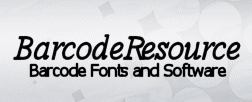| |
 |
 |
|
 |
What is RFID?
Radio Frequency and Identification (RFID) is an automatic identification method
that uses radio waves to remotely read data from tags. The main advantage of RFID is the tag
need not be in the line of sight of the reader.
An RFID tag is a small object that can be attached
to a product or item. It usually contains information about the product or a unique identification number.
There can be two types of tags, active and passive. Passive tags require no internal power source,
whereas active tags require a power source.
Gen 2
The EPC Gen 2 is a standard developed by EPCGlobal that is widely supported by many different organizations
including EAN International and the Uniform Code Council. This standard which was approved in 2004
is likely the widely adopted standard internationally.
The standard basically proposes the use of a globally unique number called the Electronic Product Code (EPC)
to identify items and products in the supply chain for any industry around the world.
|
|
 |
|

